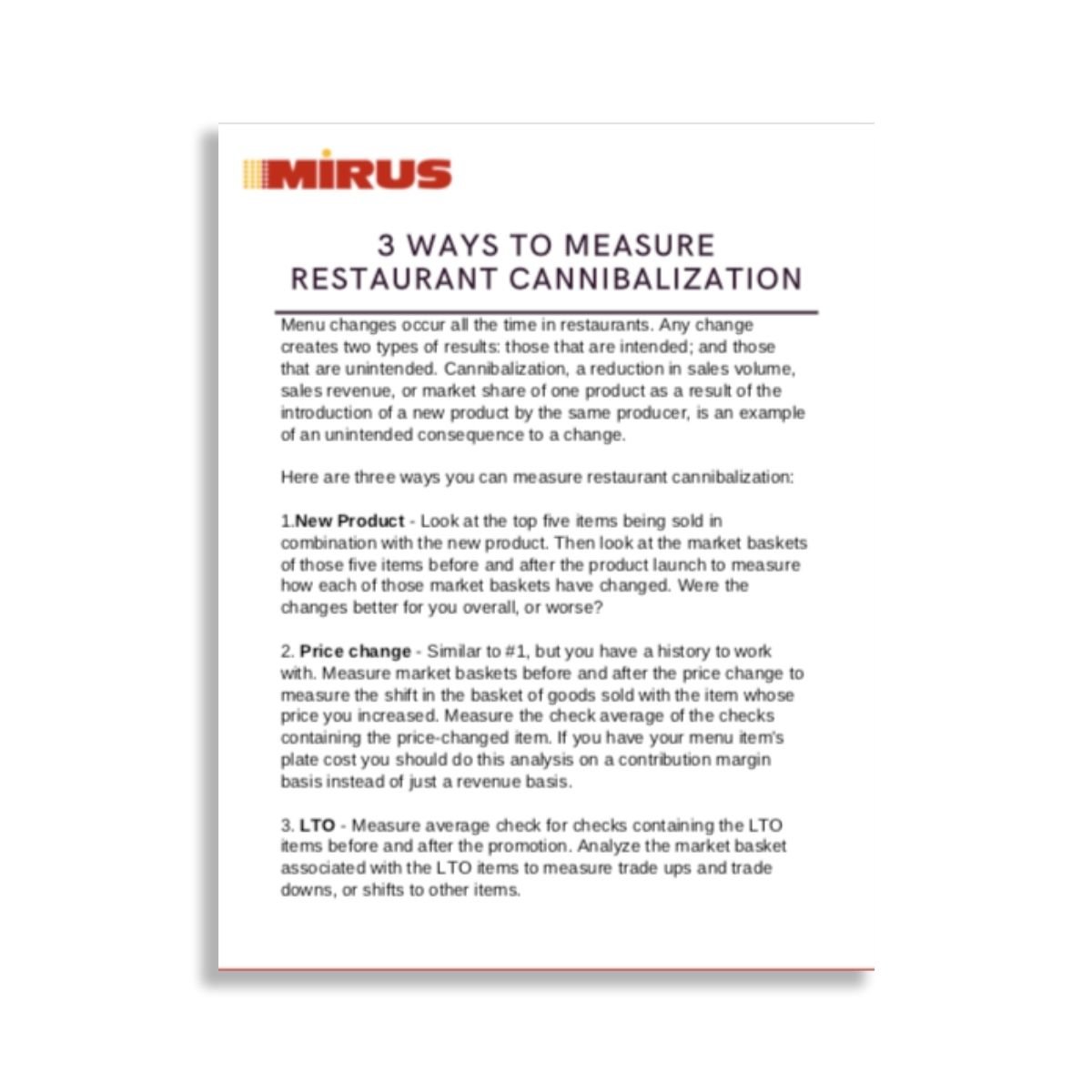Change Happens...
Menu changes occur all the time in restaurants. Sometimes it is a price change; sometimes it is a limited time offer. There are lots of reasons for changing your menu. Think of a menu change as an avenue to stimulating your customers. By making the change, you are hoping to achieve a particular outcome; for example, selling more of a menu item or making more money selling the menu items you already sell.
Any change creates two types of results: those that are intended; and those that are unintended. Cannibalization is an example of an unintended consequence to a change. I like this definition of cannibalization from Wikipedia:
In marketing strategy, cannibalization refers to a reduction in sales volume, sales revenue, or market share of one product as a result of the introduction of a new product by the same producer.
I would broaden this definition beyond only new product introductions to include price changes and discounting. So in my world, cannibalization is directly linked to any changes to the menu. There is a debate as to whether cannibalization is all bad or not, but we will leave that for another blog.
Back to the wiki definition: "cannibalization refers to a reduction in sales volume... as a result of the introduction of a new product." The definition is clearly telling us that the reduction has to be a direct result of the new product. However, other factors may be at play that could cause the reduction, so you have to measure it by examining individual guest checks with the new product on it. You cannot measure cannibalization by simply looking at a product mix report because it does not show you the content of guest checks.
Market Basket is a term for describing all the items that are sold in combination with another menu item. When we go into a restaurant, we usually buy more than a single menu item. The things we buy together summed up across lots of days and lots of stores is called a market basket.
Many restaurant companies have no way to measure cannibalization in a reasonably accurate manner. Let's take a look at three examples:
- New Product - Look at the top five items being sold in combination with the new product. Then look at the market baskets of those five items before and after the product launch to measure how each of those market baskets have changed. Were the changes better for you overall, or worse?
- Price change - Similar to #1, but you have a history to work with. Measure market baskets before and after the price change to measure the shift in the basket of goods sold with the item whose price you increased. Measure the check average of the checks containing the price-changed item. If you have your menu item's plate cost you should do this analysis on a contribution margin basis instead of just a revenue basis.
- LTO - Measure average check for checks containing the LTO items before and after the promotion. Analyze the market basket associated with the LTO items to measure trade ups and trade downs, or shifts to other items.
Conclusion
Every change you make to your menu creates intended consequences and unintended consequences. Simple product mix can tell you how much of an item you sell, but it cannot help you measure shifts in the market basket of goods that are bought in connection with a menu item. Check level analysis is required to accurately measure cannibalization.
Thoughts?
Is there any food item or group in your current menu that may be cannibalizing another item? If so, what makes you think that?
About Mirus:
Mirus is a multi-unit restaurant reporting software used by operations, finance, IT, and marketing.
If you enjoyed this blog, please share using the social buttons at the top of the page and make sure to leave your thoughts in the comment section below!









.png?width=50&height=50&name=Mirus%20Logo%20(1).png)